Japanese knotweed: removal, identification and treatment
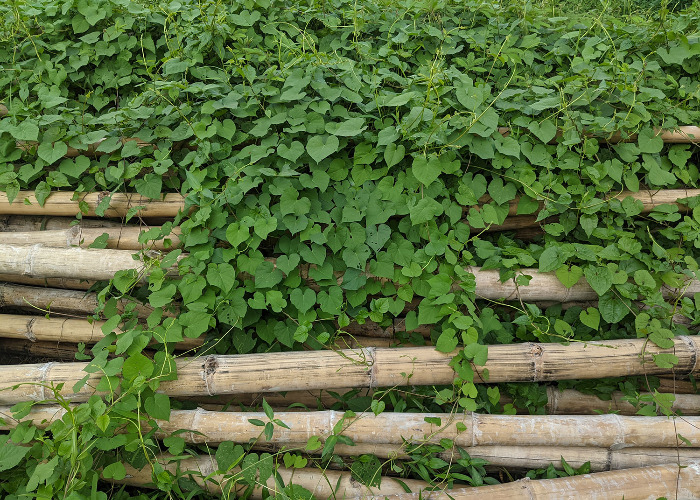
This insidious plant is the bane of all homeowners' lives—here's what to do if you find it
They are two words that instil fear in any homeowner: Japanese knotweed. But one homebuyer was so furious to have discovered the invasive plant in the garden of his new property that he took the previous owner to court, and won.
READ MORE: 12 garden diseases and disorders and how to fight back
Jonathan Downing bought his home in Raynes Park, South West London, from Jeremy Henderson in August 2018, but was horrified to discover Japanese knotweed in the garden shortly after moving in.
It was revealed in court that in paperwork regarding the sale of the property, Mr Henderson ticked a box saying there was 'no' Japanese knotweed in the garden. Mr Downing argued that had Mr Henderson ticked the box saying 'unknown', he would have investigated further before completing the sale.
However, despite Mr Henderson stating in court that he was not aware of any Japanese knotweed in the garden of the property, an expert witness showed that knotweed had been present at the property since 2012—around three years before Mr Henderson himself moved in— and that it had once stood at 2 metres tall and had been treated with herbicide.
For this reason, the judge at Central London County Court said he could not be convinced that Mr Henderson was unaware of the knotweed and ordered him to pay £32,000 in damages as well as almost £200,000 in legal costs.
What is Japanese knotweed?
Japanese knotweed (fallopia japonica) is a rapidly spreading plant, whose roots grow deep underground, suppressing other plant growth. A perennial, stem growth is renewed each year and by early summer its creeping bamboo-like canes begin shooting as much as seven feet.
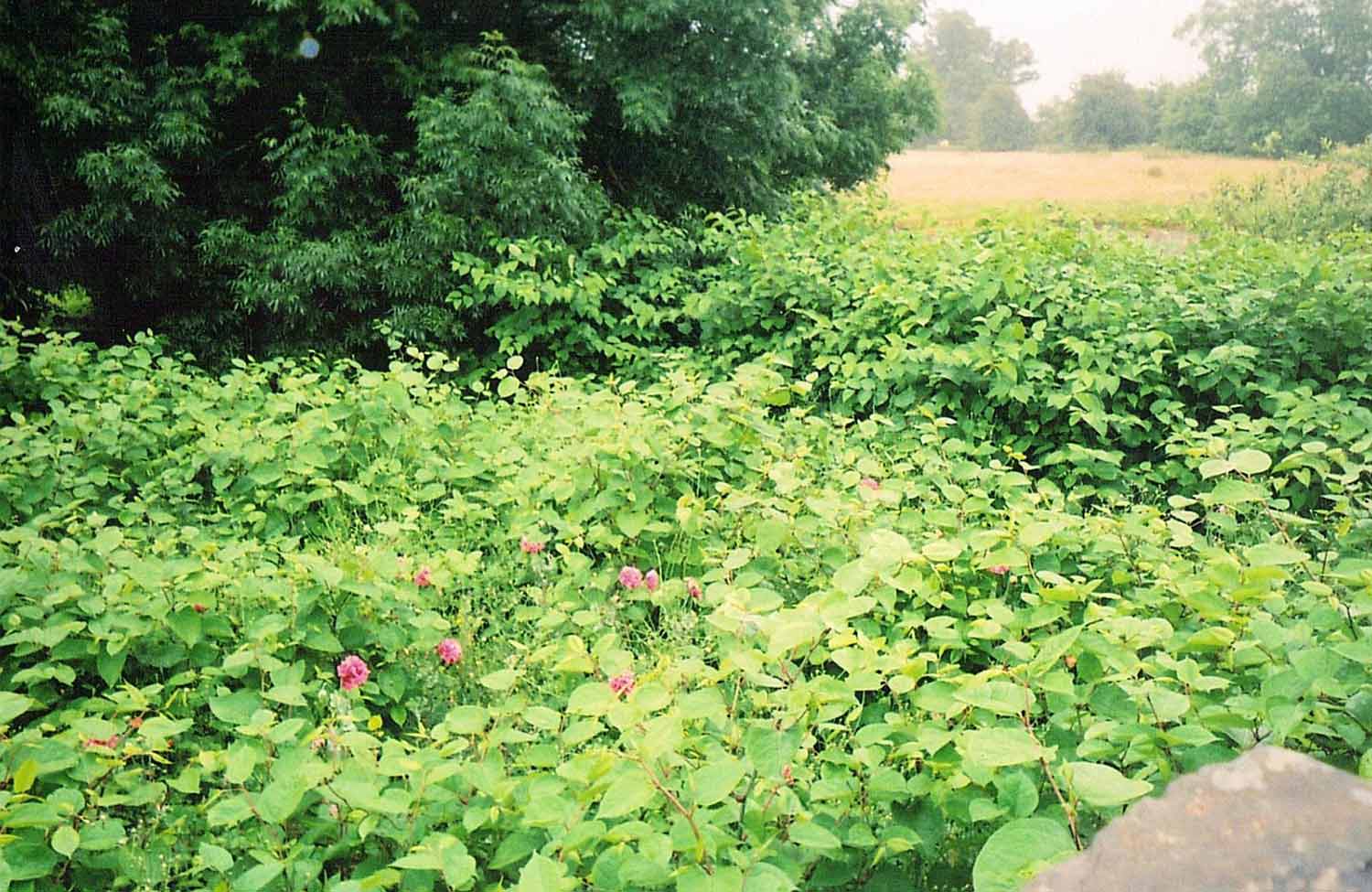
Image credit: Jonathan ORourke / Alamy Stock Photo
If you get Japanese knotweed on your property it can be tricky and expensive to get rid of, so much so that official Japanese knotweed guidance from the Royal Institute of Chartered Surveyors (RICS) was updated in 2022 to say that "'eradication' should not generally be regarded as a primary objective unless absolutely essential, for example in anticipation of construction works, when complete physical removal should be undertaken."
The RICS says that despite "exaggerated media reporting," Japanese knotweed rarely causes structural damage to substantial buildings such as residences, though it can damage lightweight structures, freestanding walls, retaining walls, paths, hardstandings and drains if left untreated.
However, the professional body does acknowledge that the stigma of knotweed can still linger, even after an infestation has been treated.
Japanese knotweed identification
Japanese knotweed has various stages of growth, meaning it can look very different (as you can see in these Japanese knotweed pictures), depending on the season.
It is usually seen from late spring to summer. According to the Royal Horticultural Society (RHS), in spring you may notice reddish-purple shoots at ground level that emerge from crimson-pink buds.
By summer these will have grown into tall stands of bamboo-like canes that have purple flecks and branches from nodes along the plant’s length.
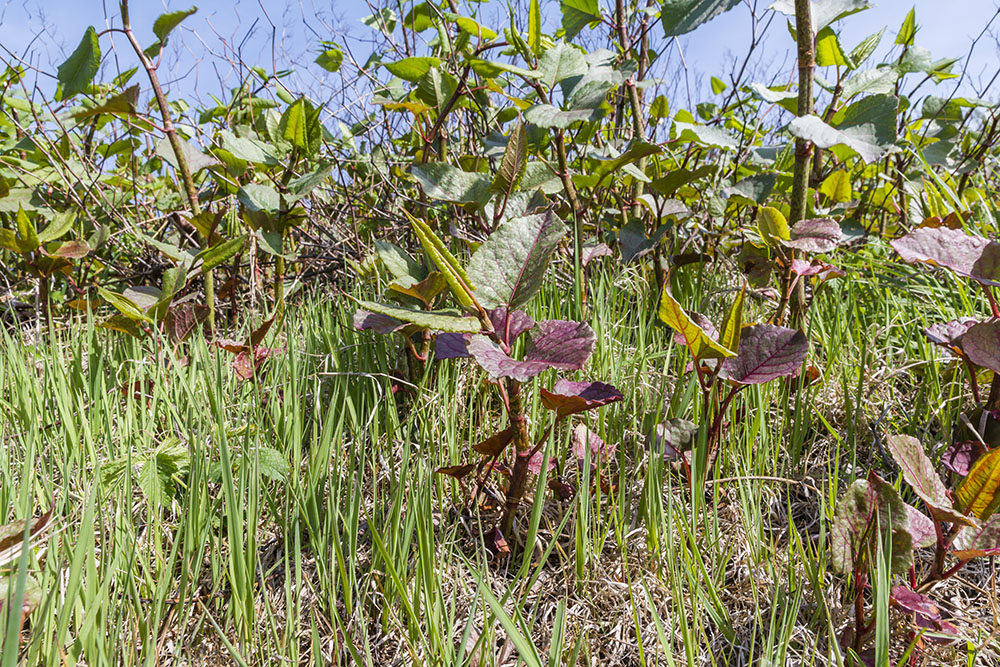
Image credit: gubernat / Shutterstock
In winter, the stems die back to ground level (though the dry canes often remain for longer).
Other identifiable markers are creamy white flowers that hang in loose bunches in late summer/early autumn.
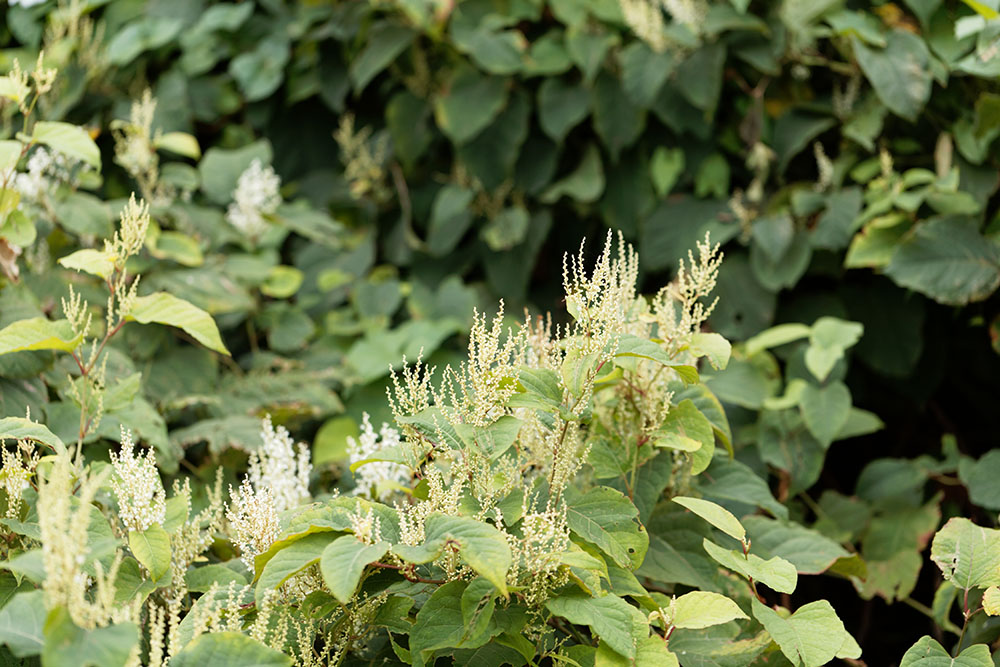
Image credit: ChWeiss / Shutterstock
The shovel or heart-shaped leaves grow up to 14cm in length and create a zig-zag pattern along the stems.
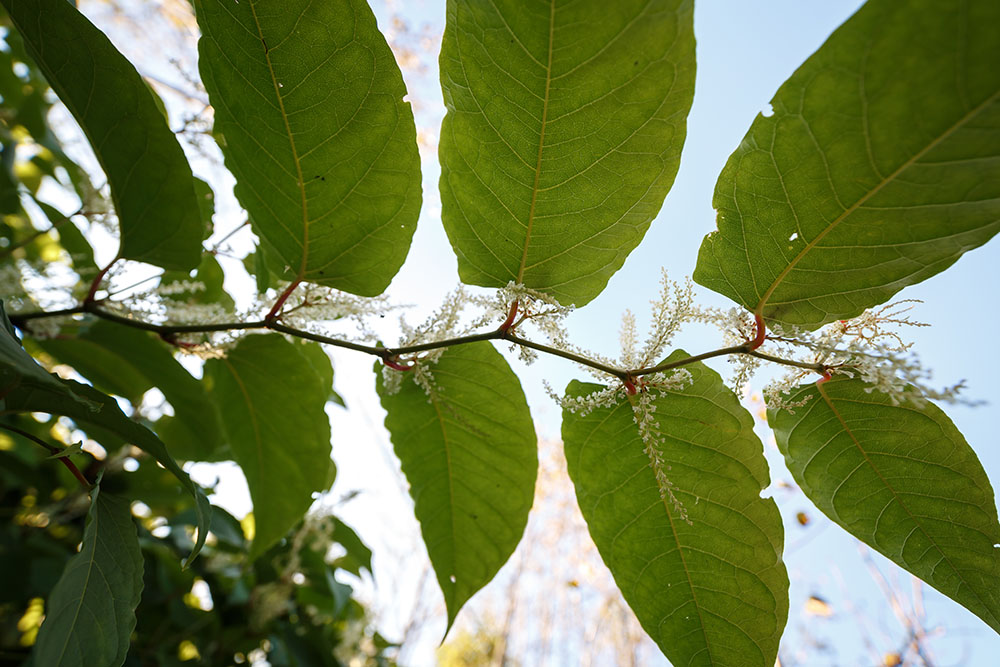
Image credit: Vasilii Aleksandrov / Shutterstock
If you are a member of the RHS you can send photos of suspected Japanese knotweed for identification.
Do property surveyors check for Japanese knotweed?
Previously, the invasive plant was notorious for knocking up to 15% off the value of a property, not to mention wreaking havoc for homebuyers looking to obtain a mortgage on an affected house.
According to the old advice, if Japanese knotweed was present within seven metres of a home's boundary, then it was considered high-risk by lenders.
However, the new guidelines from the RICS have dismissed the seven-metre rule and replaced it with recommendations for a more lenient approach.
Instead, surveyors can use their discretion when it comes to assessing the impact of Japanese knotweed on a property, which should make it easier to buy or sell a home.
The new guidance recommends that surveyors flag the presence of the plant if there's a visible infestation within three metres of a home's boundary.
The report also criticises the exaggerated public perception of the problems caused by Japanese knotweed, which it says is "often out of all proportion to the cost of remediation".
When it comes to treatment, the RICS now emphasises appropriately controlling infestations, rather than automatically aiming for eradication.
How does Japanese knotweed affect mortgage applications?
While some mortgage companies may be hesitant about lending money to house hunters looking to purchase a home affected by Japanese knotweed, lenders have become more lenient in recent years.
A report from the House of Commons Science and Technology Committee in 2019 labelled the approach of many lenders to cases involving knotweed as "over cautious". Consequently, many mortgage providers now assess applications on a case-by-case basis, which can involve a specialist report and a professional eradication plan being put in place.
However, in light of the RICS's new advice to surveyors, it is hoped lenders will gradually start to respond by easing the requirements for mortgage applications on properties with knotweed.
What do I do if there is Japanese knotweed on my property?
It is not illegal to have Japanese knotweed on your property but it is your responsibility to control it to prevent it from spreading to other properties. If you do not, you may be prosecuted and there are strict government guidelines that should be adhered to.
The law requires that a property owner declares the presence of any Japanese knotweed when they come to sell.
If you are planning to buy a property where Japanese knotweed is present, the lender will normally require assurances that it will be dealt with before they transfer funds. This can often require a management plan by a professional Japanese knotweed removal company.
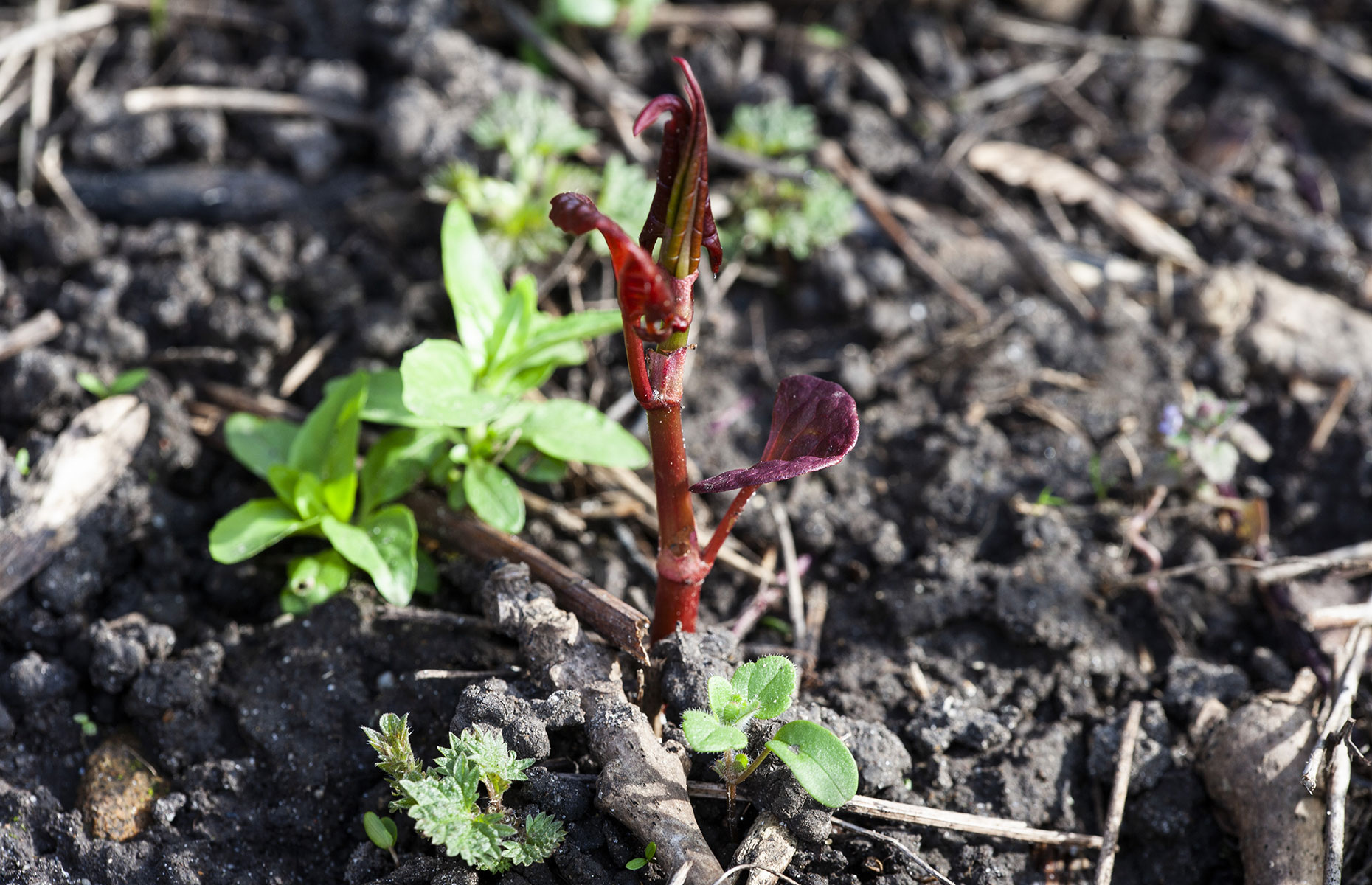
Image credit: Graham Tems / Shutterstock
Japanese knotweed removal
Though small patches of the invasive plant may be managed by the homeowner, it’s not without its problems. As it is classed as controlled waste, any parts of the plant that you do manage to dig out must be disposed of at licensed landfill sites. Alternatively, you could wait for it to dry out and burn it.
It’s best to employ a specialised Japanese knotweed contractor and ensure that they are registered waste carriers before you employ their services. The RICS has set up a register of vetted consultants and contractors with the Property Care Association (PCA). You can search at the top of their webpage to find a local, accredited professional knotweed removal firm.
Japanese knotweed treatment
Depending on how rooted your Japanese knotweed is, it may need to be treated with chemicals and you should expect to have to wait at least two seasons (three to four is more usual) to eradicate it using weed killer.
Though this can be attempted by home gardeners, it’s not recommended. Unless you use a professional company, you will not get an insurance-backed guarantee and you may run into problems when you come to sell your property or if a neighbour threatens to take legal action against you.
READ MORE: 13 common garden pests and how to treat them
Lead image: 2021 Wirestock Creators/Shutterstock
Comments
Be the first to comment
Do you want to comment on this article? You need to be signed in for this feature